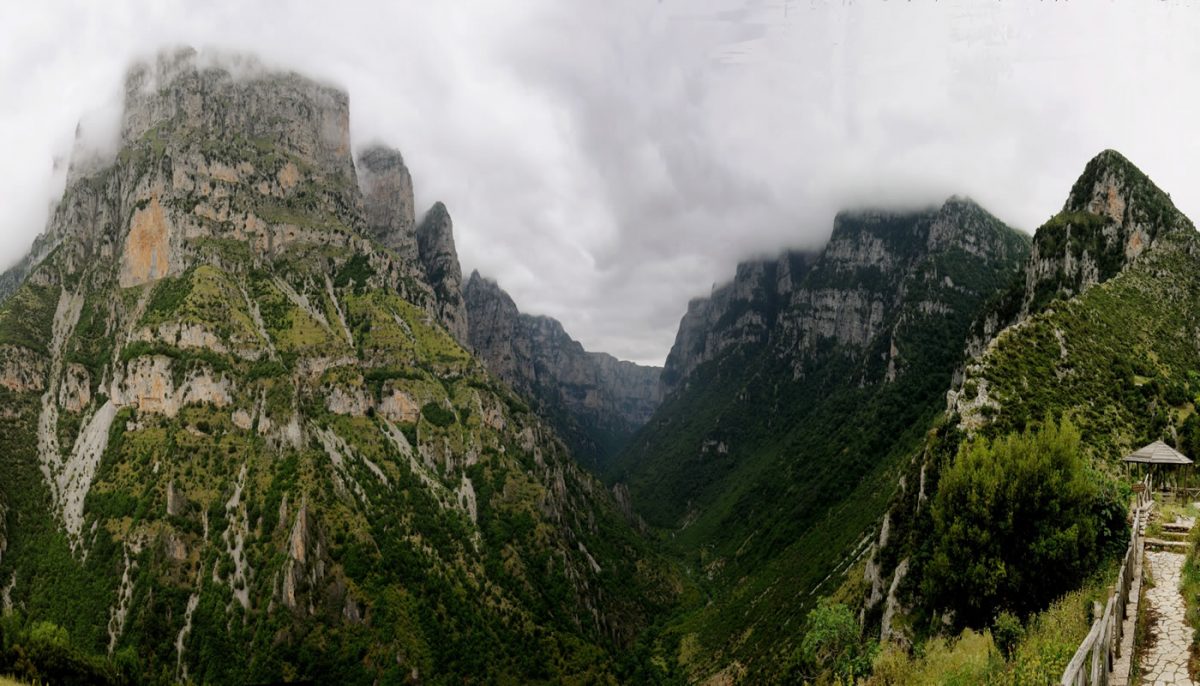In the wider area of the Geopark there is a large number of plant species as more than 1.700 taxa (species and subspecies) have been recorded in the area.
The Geopark’s floristic value is rather significant, taking into consideration that this number corresponds to 1/4 of our country’s plants.
This is due to the large altitude variations and the diverse terrain of several distinct massifs with different geological bedrock ranging from 375m to 2.637 m altitude in relation with the local specific environmental conditions.
Most of the area’s flora species and subspecies haven’t got a common name because man focused only on some of them, especially to those related to a particular use or simply because he was impressed by the beautiful colors of their flowers. Among the most spectacular mountain flowers in the Geopark territory attracting visitors’ attention are the wild lily species of the Lillium genus, found almost exclusively in forested areas and distinguished by their size and vivid colors.
These five species are: the white lily (Lillium candidum), with white color that occurs very rarely and usually around settlements, as the Prophet Elias of Konitsa and the Vikos Gorge, the Lillium chalcedonicum and the Lillium heldraichi with red color found in forests, such as in Central Zagori and Vikos Gorge, the Albanian Lilly (Lillium albanicum) with yellow color found in Smolikas and finally the Martagon Lilly (Lillium martagon) with pink color thriving in mountains, as in central Zagori and Aoos Gorge.
Other plant species of the Geopark’s mountains, having very beautiful flowers are the Poet’s narcissus (Narcisus poeticus) with white flowers that grows in forests clearings, the wild tulip (Tulipa sylvestris spp. australis) with yellow flowers in sunward slopes of forests and meadows, the Spring gentian (Gentiana verna) with its deep blue flowers found in subalpine meadows, the houseleeks with red flowers (Semprevivum marmoreum) or yellow flowers (Jovibarba heufelli) and various saxifrages, such as Saxifraga spruneri and Saxifraga marginata, occupying the rock crevices at high altitudes.
Among plants with medicinal properties the most interesting are: the mint (Mentha longifolia), the common sage (Salvia officinalis), the winter savory (Satureja montana), the thyme (Thymus leucospermus), the mountain tea (Sideritis raeseri & S. montana), the hellebore species (Helleborus cyclophyllus), the spurge olive (Daphne oleoides), the rosebay willow-herb (Epilobium angustifolium), the hemlock (Conium maculatum), the myrtle spurge (Euphorbia myrsinites), the dwarf elder (Sambucus ebulus), the white hellebore (Veratrum album) and many more.
Of particular interest is the mountain flora in areas with ophiolite geological substrate, i.e. Smolikas mt, where some species, well adapted to high metal concentration soil, exist: (Allysum smolicanum, Allium sphaerocephalon, Viola albanica, Gallium ophiolithicum, Cerastium smolicanum, Centaurea ptarmicaefolia and others.
Moreover, on the Geopark’s mountains many rare, native and endangered species occur. Some of the most interesting endemic plant species are the following: Centaurea tymphaea, Sedum tymphaeum, Centaurea pawlowskii, Bornmuellera tymphaea, Alyssum heldreichi, Silene pindicola, Onosma epirotica, Minuartia pseudosaxifraga, Valeriana crinii, Soldanella pindicola, Saxifraga biflora epirotica, Galium sacrorum, Hieracium dasycraspedum.
Finally it is worth mentioning few other species of the area, such as the Serbian phoenix (Ramonda srebica), found exclusively in the Vikos, Voidomatis and Aoos Gorges, the insectivorous Pinguiculla crystallina ssp hirtiflora, found mainly in Smolikas mt and the German iris (Iris germanica) that occurs in the narrow ledges on Timfi’s cliffs.





Τα σχόλια είναι κλειστά!